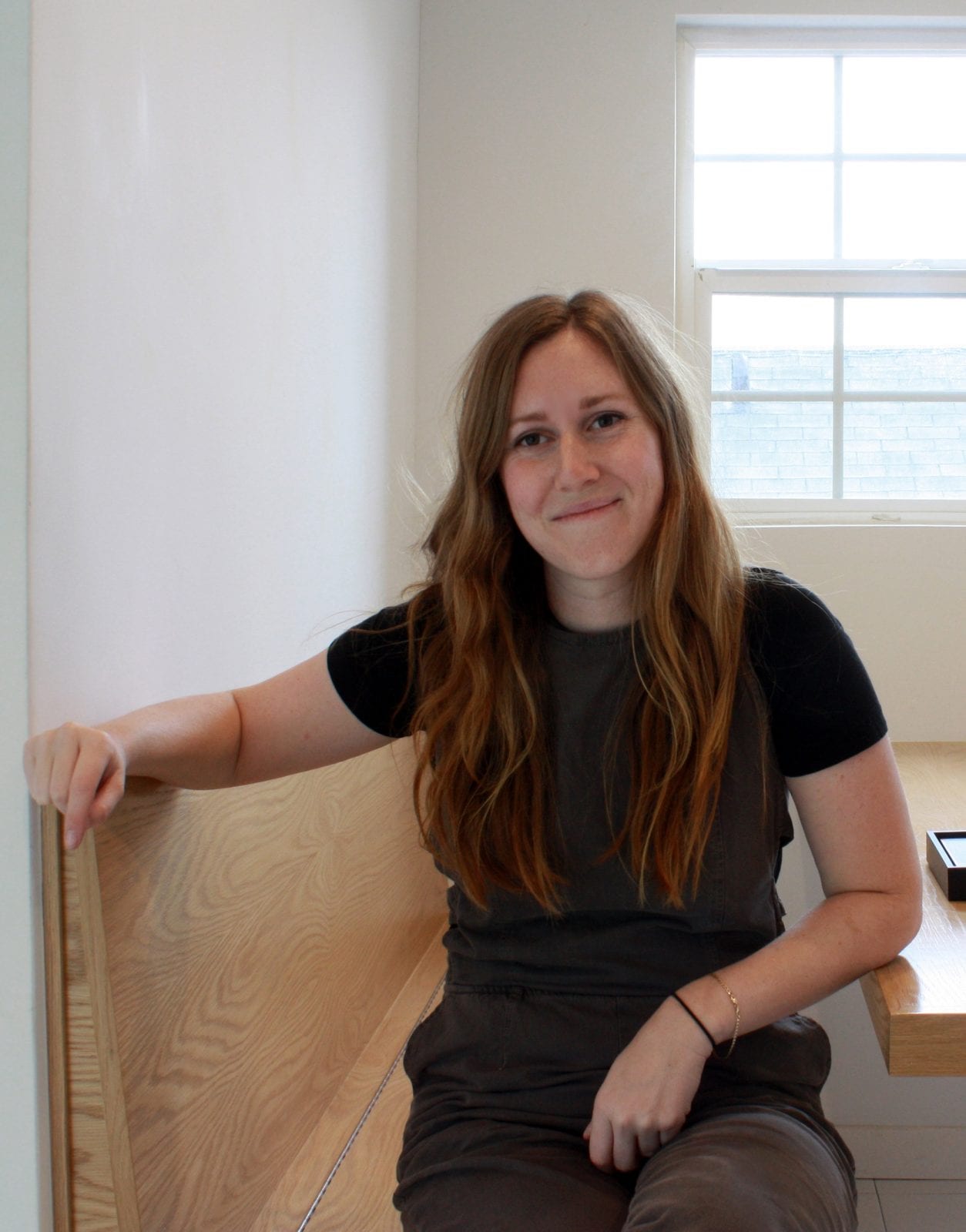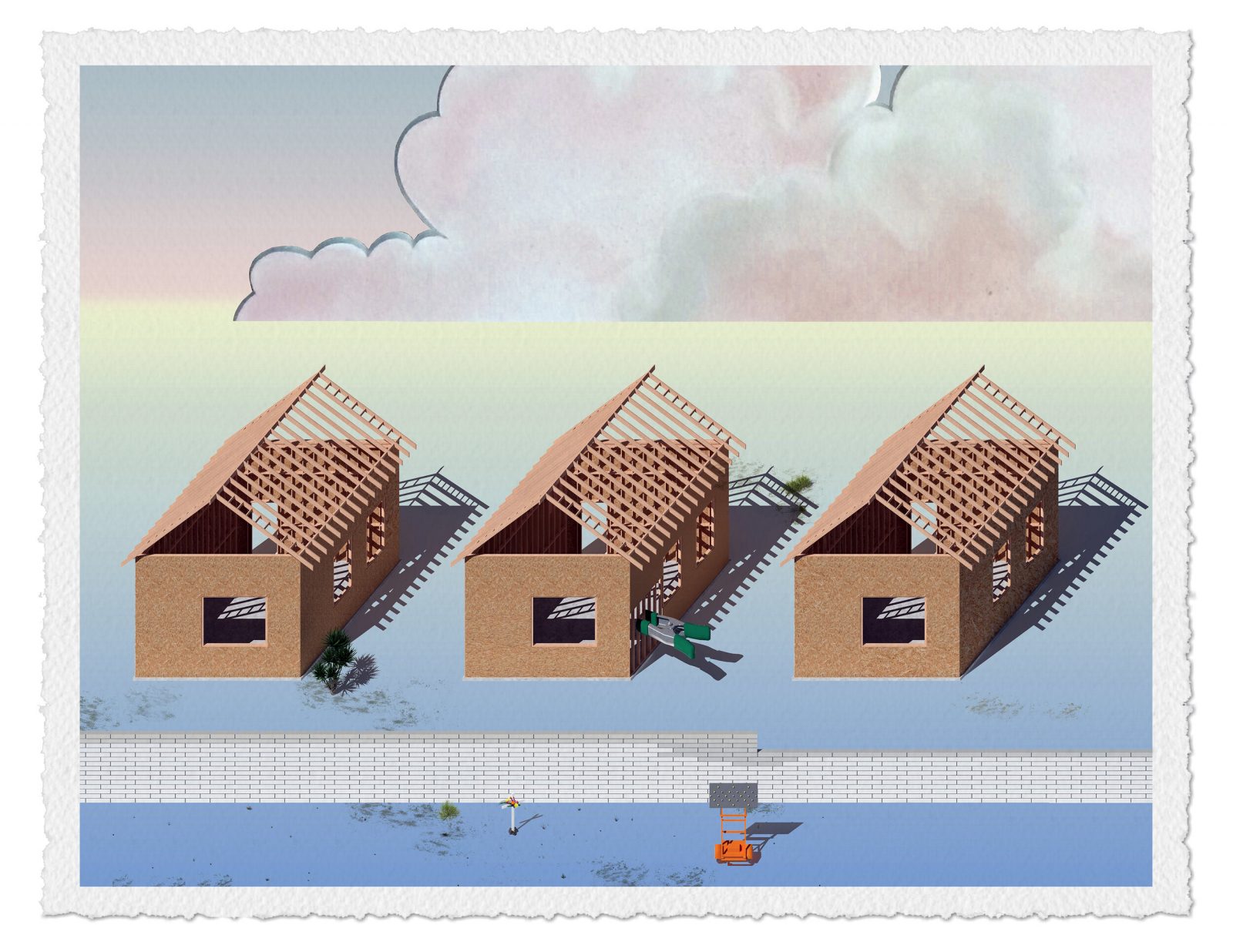Erin Wright Explores West Coast Aesthetics, Painting and Representation
Faculty member Erin Wright is a designer, painter and curator. After receiving a BFA from The School of the Art Institute of Chicago and an M.Arch from The University of California, Los Angeles, Erin has collaborated with Andrew Kovacs at Office Kovacs located in Chinatown. She is also co-founder of Binder Projects, a curatorial project based in Memphis, Tennessee. We recently caught up with Erin to discuss her background and how her experiences have shaped how she designs today.
Interview with Erin Wright
 Why did you choose to study art and architecture?
Why did you choose to study art and architecture?
I chose to attend The School of the Art Institute of Chicago for my undergrad degree because I knew I wanted to be an artist but didn’t know in what capacity. The curriculum at SAIC is interdisciplinary – you don’t declare a major, no grades, no gpa. I took a few classes in architecture, but mostly painting, fiber arts and museum studies. After graduation, I met two architects that had been hired to do the demolition drawings for Bertrand Goldberg’s Prentice Women’s Hospital, which was very controversial at the time. I had never done a demo set but they hired me anyway and that was my first experience with architecture outside of academia. Prentice Hospital was up for landmark status, and we were dealing with protests and threatening phone calls daily. I was fascinated that people felt so strongly about a piece of architecture, but mostly I liked the idea of the architect as an instigator.
You have a background as a professor, curator and designer. What do you believe is the relationship between academia and practice?
The critical processes learned in an architecture school are the foundation for any practice in most making fields. The work explored in an academic setting is boundless, with opportunities to learn about processes and data collection. Students are not considering the economies of production, which is learned through working in an office. It’s important that the education of realizing a building be mostly excluded from academia because many young people are graduating from architecture programs and deciding to forego the traditional architecture office, but are working in an adjacent field.
Working and living in Los Angeles, how does the city shape your practice and teaching?
Los Angeles is an epicenter for culture, but there is still this sense of freedom. It’s part of the ethos that everyone can do their own thing. I consider my painting practice and my architecture practice to be of the same body of work and I think that is very authentic to the culture of the West Coast.

Architects often face questions of narrowing project scopes. With changes in climate, technology, and construction techniques, how do you think architects and designers will adapt ways of practicing to advance the profession?
It is the current and future architect’s social responsibility to demystify the profession and make it more accessible. The conversations around tech, sustainability and construction needs reframing for the profession to evolve. The faculty and staff at Woodbury are already redirecting the conversation through programs like the WUHO Gallery. Projects like that engage the public and invite exploration into the discipline.
What projects have you enjoyed working on most in your career?
The gallery (Binder Projects), which opened its virtual doors two years ago, is one of the most fulfilling projects to date. It has given myself and my fellow travelers in similar places of our careers a platform to engage and promote one another. We attempt to bring transparency to the art collecting experience and build meaningful relationships with artists and collectors.
What advice would you give to students who aspire to follow a similar career path?
There’s this anxiety that students should leave academia with a lifelong disciplinary project and that’s just not true! A few have a clear idea about what they want to work on, but students who don’t should embrace the flexibility and take advantage of the opportunity to continue their education outside of school. After graduation, not everything has to be perfect to start your personal project or practice.
What three words would you use to describe Woodbury?
Reinventive. Inclusive. Optimistic.